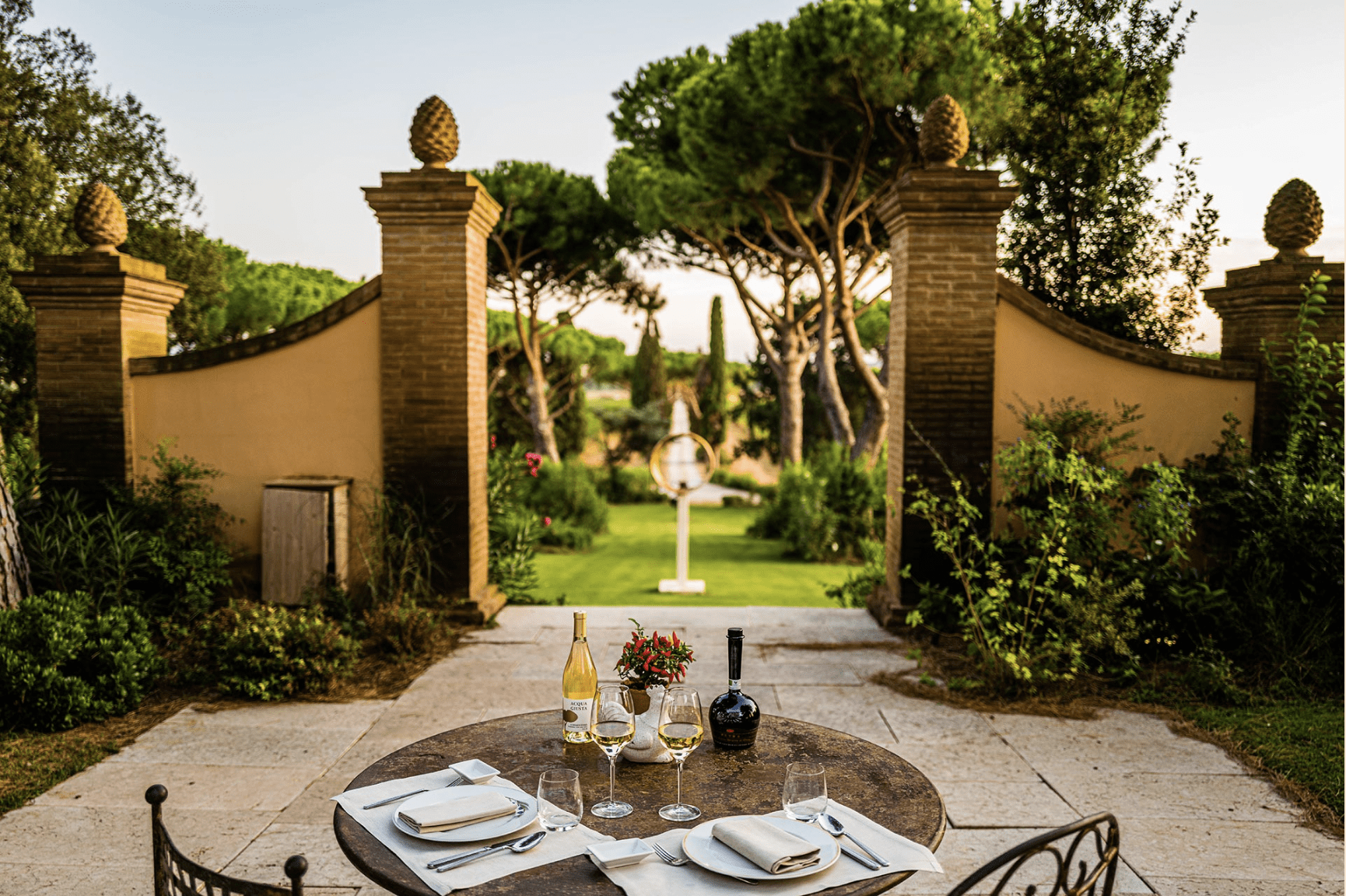
Dinner in the Garden of Eden… sorry, L’Andana, Tuscany
In summer Europe is at its best, and it’s time to visit destinations made justifiably famous over the centuries. Here, we visit a classical country estate hotel in Tuscany, L’Andana a wonderful and authentic luxury hotel in the Cotswolds, The Fish, and a traditional luxury hotel in Vienna, The Harmonie
L’Andana, Tuscany review
Tuscany is a place of justifiable legend among discerning and well-heeled travellers. But which Tuscany? Everyone knows Florence and the hill country around Sienna. But Tuscany is a big place, relatively speaking, and if you drive a couple of hours south, through beautiful scenery, you come across L’Andana.
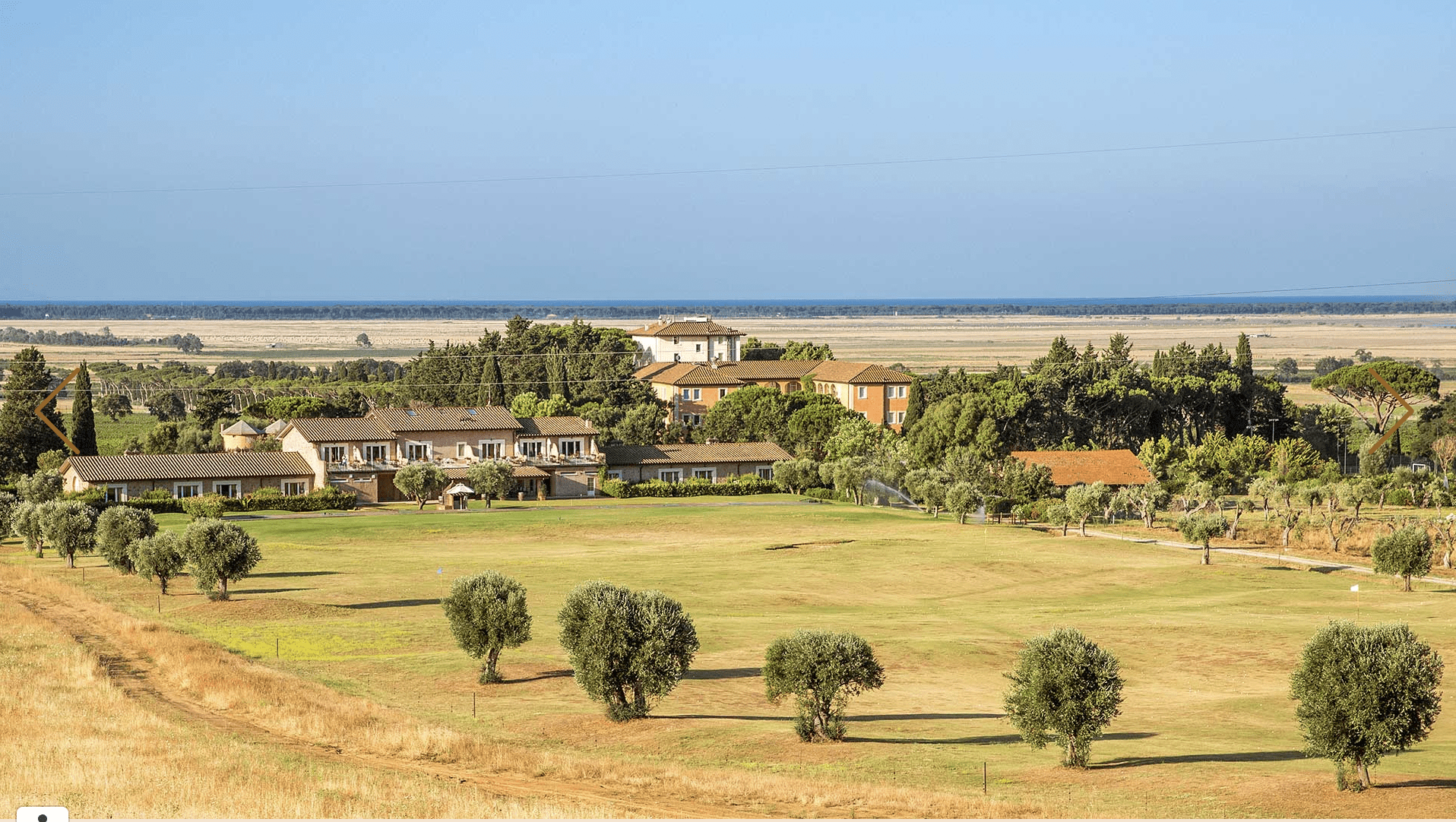
The Tuscan countryside view of L’Andana
Nestled amid olive groves underneath a forested hillside, it is just a couple of miles from the Mediterranean Sea but away from the bustle of the coast. You can see mountains, sea and sky and as you make your way up the long, cypress-lined drive.
Read more: Omega CEO Raynald Aeschlimann on the watch industry
L’Andana is a grand-manor-house-turned-hotel in the Tuscan tradition. This area feels more discreet, less busy than the countryside of central Tuscany. Walk through the hotel’s grand hall to the outdoor pool and it feels more as if you are in a private home – it never felt crowded, and the servers by the pool feel more like your personal butlers.
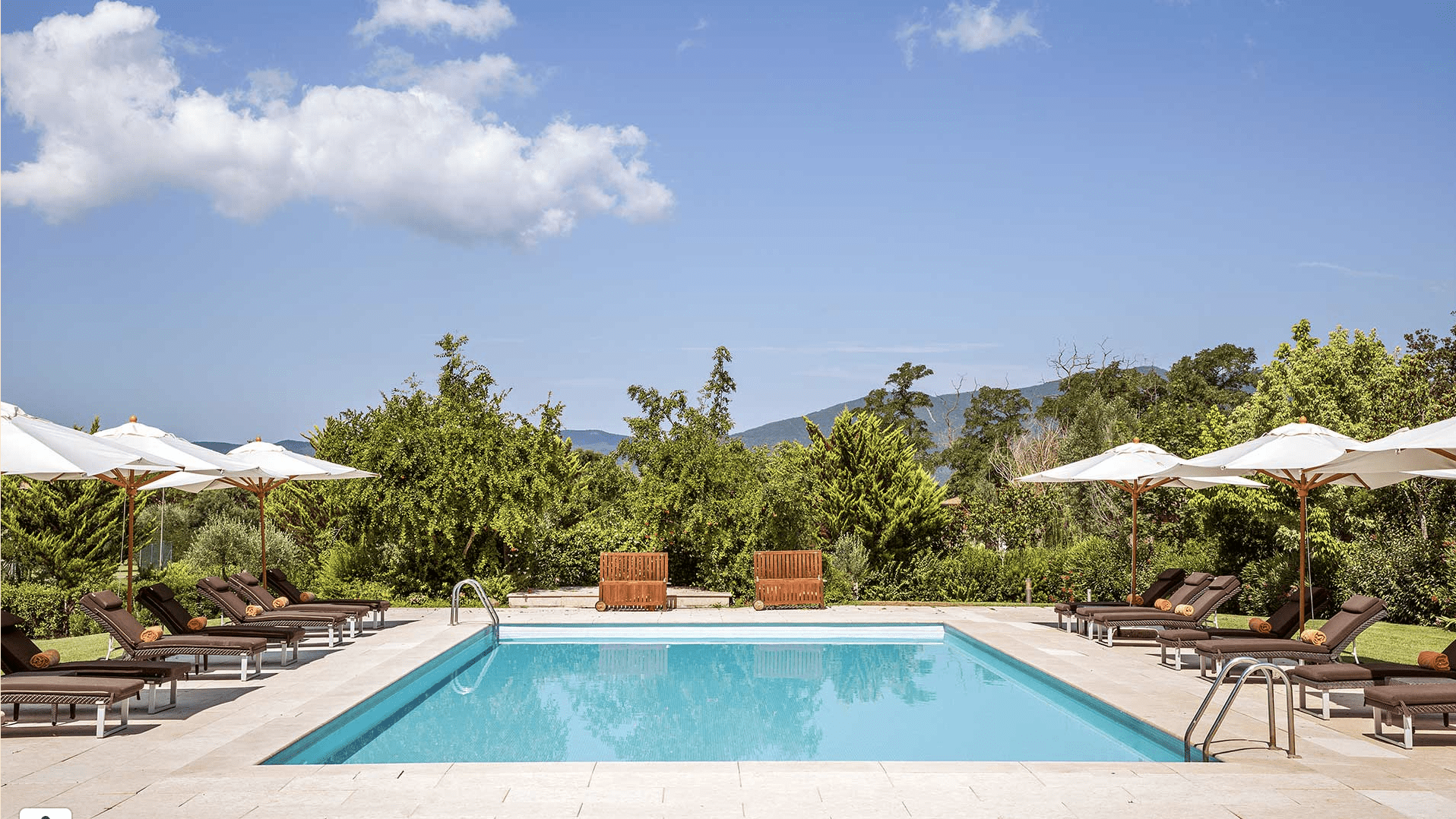
It feels as if you are in a private home as you sit by the outdoor pool at L’Andana
There is another pool across the gardens and near the forest with views leading down to the sea: this is officially the children’s pool but during our stay it was empty and delightful after teatime. It’s the kind of place you go to and then give up your plans to tour the surrounding area or go for dinner, just deciding to relax until sunset.
The cuisine at L’Andana is celebrated, and we enjoyed a highly memorable dinner in the gardens surrounded by fountains, flowers and trees; perhaps just as memorable was the breakfast in the same garden, where you see the birds, insects and bees in full glorious activity. You are are in the middle of nature. And unlike the rest of Tuscany, there isn’t a cluster of other hotels on the horizon or busy roads nearby – it’s just you.
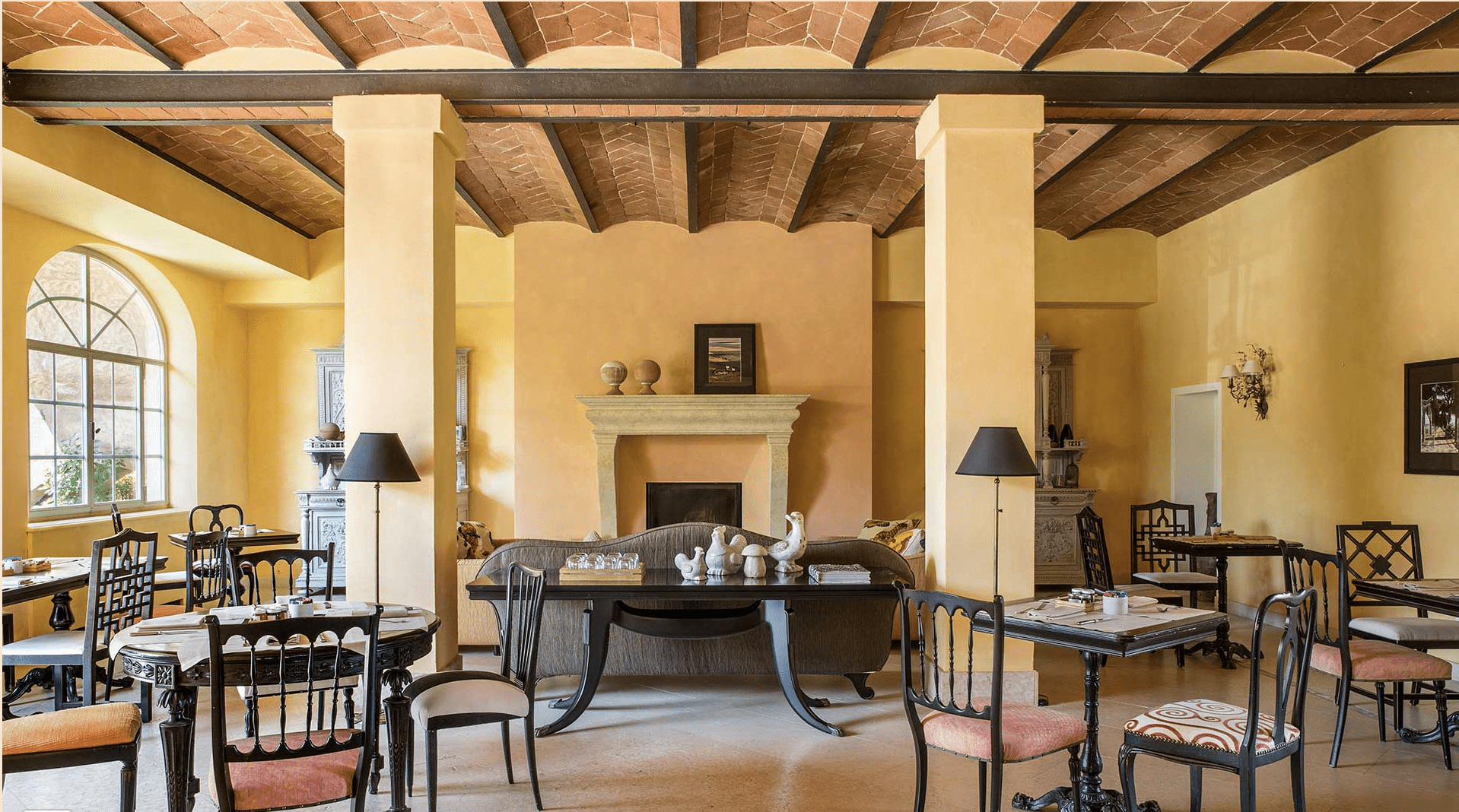
The comfortable reception area at L’Andana
Our room was suitably memorable, with a vaulted high ceiling and a view across to the hills in the forest. The public areas at L’Andana are so relaxing it seems only natural to have a Negroni at the piano bar. There are many activities including wine tasting, cooking classes and even golf – and the hotel will book you a place at one of the beach clubs in nearby Castiglione della Pescaia, where the beach is long and sandy and the water is shallow and clear.
Altogether, something of an undiscovered gem.
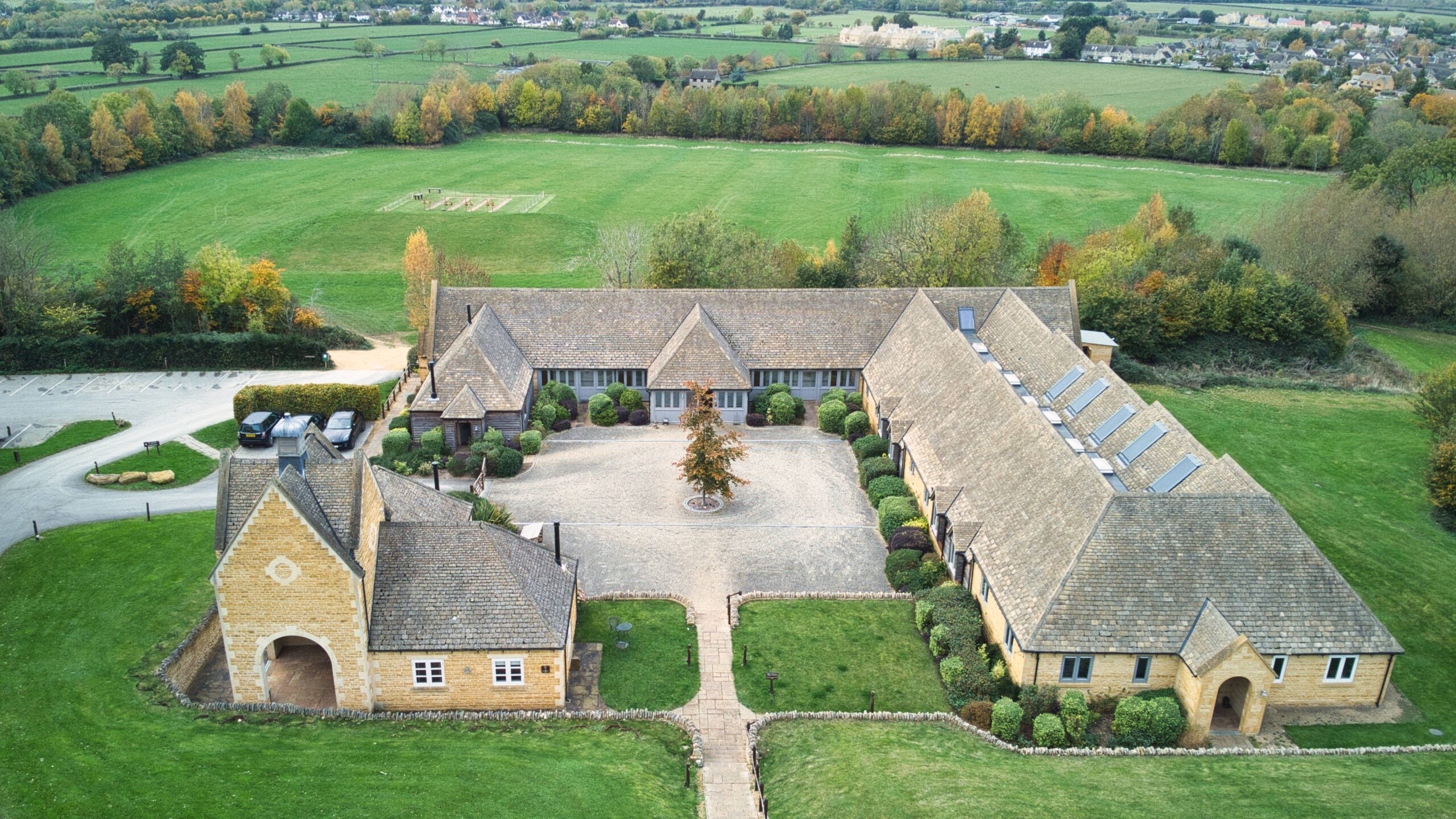
The Fish, a luxury hotel in the Cotswolds overlooking the Severn River valley
The Fish, Cotswolds review
There are many hotels which oversell themselves. You’ve been to them: wide angle images of rooms disappointingly small, images of grand façades that conveniently ignore the hideous 1990s office block jarring into the view in real life; country hotels that look grand but are poky with views of nothing much.
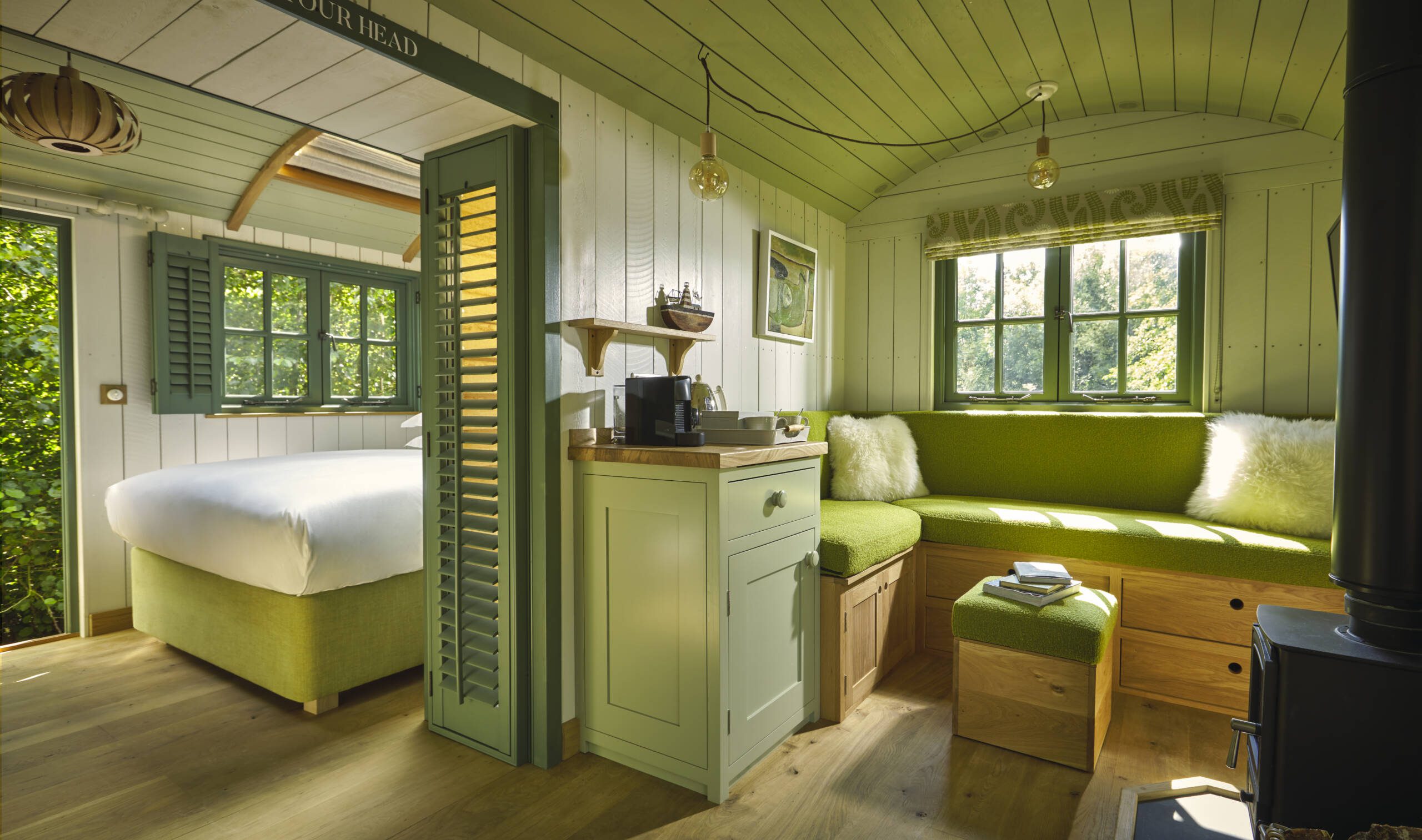
The Hideaway, one of many unique rooms at The Fish
The Fish is a very rare example of the opposite: a hotel even more interesting than it what it seems to be on its website.
Follow LUX on Instagram: @luxthemagazine
There’s nothing wrong with the website, mind. It’s just that the very concept and execution are discreet. It is built into the woodland Western escarpment of the Cotswolds, the celebrated uplands halfway between London and Wales where plutocrats and aristocrats rub shoulders. Here, in one of the most distant and remote corners is an area of many thousand-year-old forests and ecosystems, tumbling down a steep slope that marks the end of the Cotswold uplands and drops into the deep Severn River valley. The mountains of Wales loom in the distance.
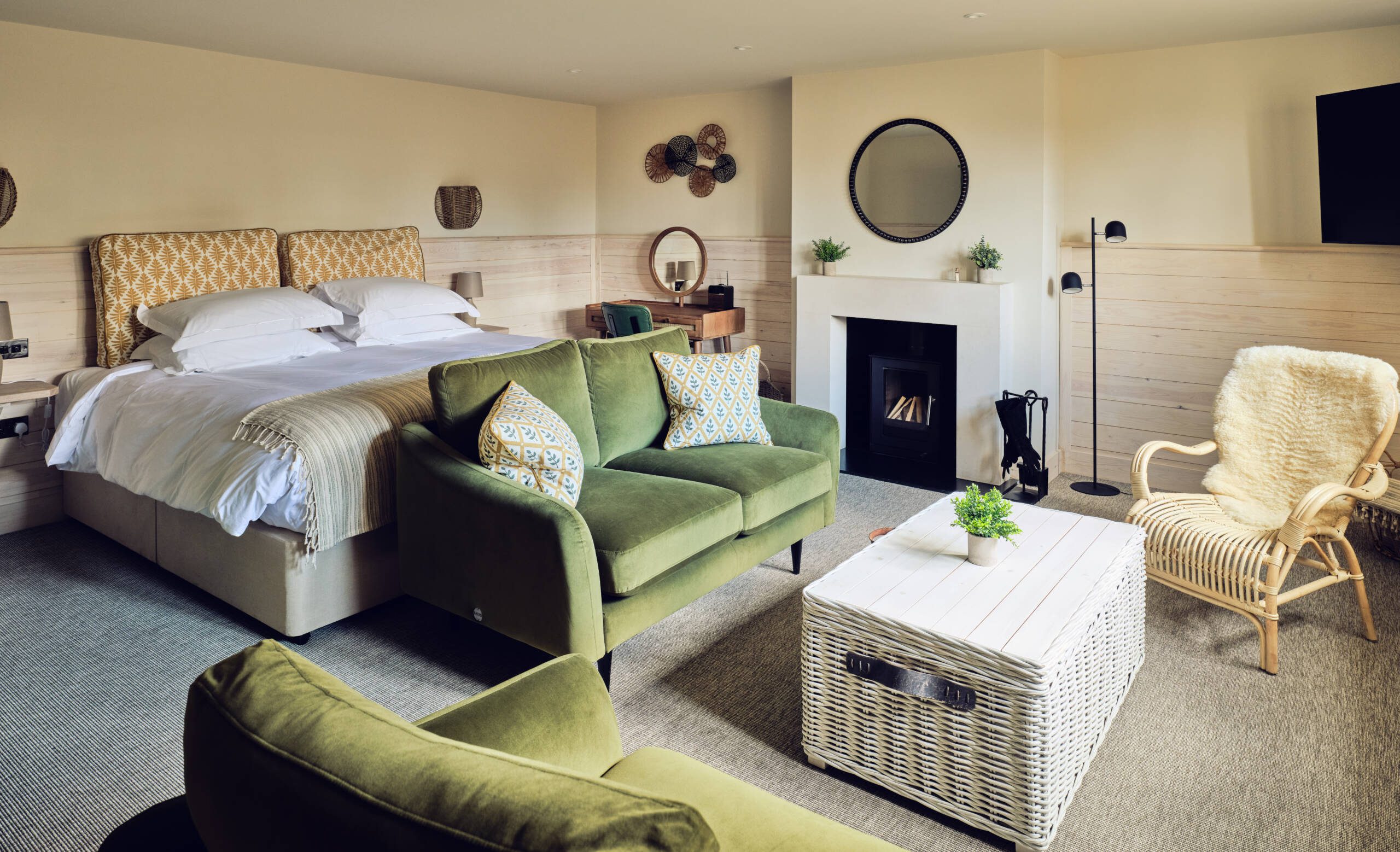
A suite at The Fish, within the Farncombe Estate
You approach The Fish from a country lane at the top of the Cotswolds, first entering the grounds of the Farncombe Estate that encompasses it. The driveway winds through woods, past a couple of buildings, and down the sloped escarpment, views all around. You park at a low-rise wooden building, almost lost in the forest; this is where the reception area, bar and restaurant are located. They are stunning inside, modern without being jarring, with a Scandinavian-forest-feel and extensive outdoor terraces that blend woodland with views.
Our room was in another building, a short walk through the woods (you can also drive and park outside) and it had uninterrupted views across the fields of the Severn Valley. In the evenings, we walked to the bar and restaurant (where breakfast was also served) and enjoyed some quite magnificent country food – excellent fish and local herbs and vegetables. Very pure flavours and highest quality ingredients. We also appreciated the efforts to employ local staff: it gives The Fish a feeling of authenticity.
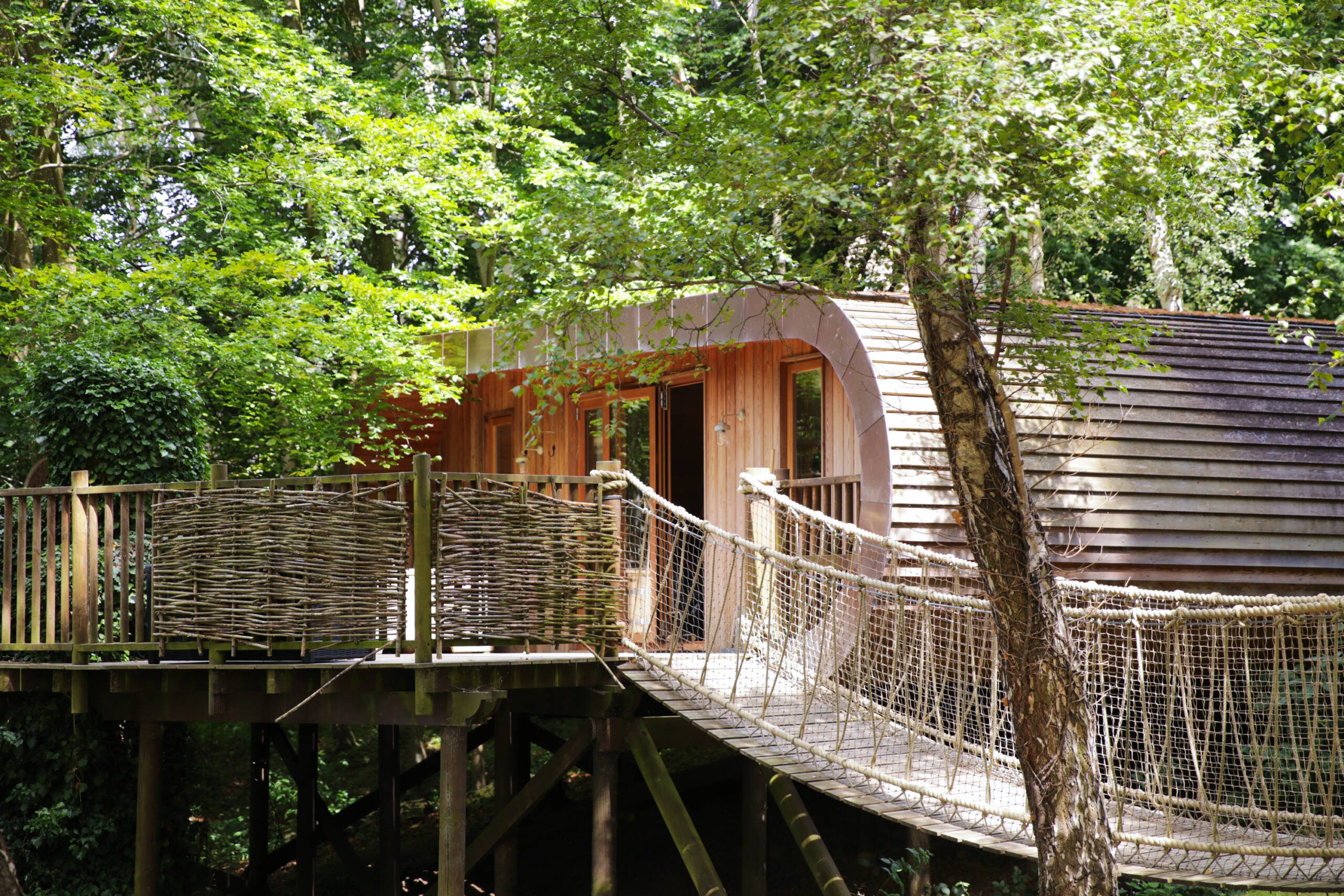
The Treehouse: The Fish is a collection of quirky hotel rooms, treehouses and huts, all nestled in the 500-acre hillside
If you feel like escaping from The Fish, you have an array of Cotswolds walks all around, and these are among the best country walks in the world: along hillsides, through glades and woods, meadows and hilltops. There are also the historical villages to visit: you can walk to the crazily pretty Broadway in 20 minutes, and others like Chipping Camden and The Slaughters are a short drive (or long hike).
The Fish itself also offers an array of activities and recreations, from clay shooting to axe throwing and falconry. But our favourite was chilling at sunset – which it faces – with a Picante on the bar terrace.
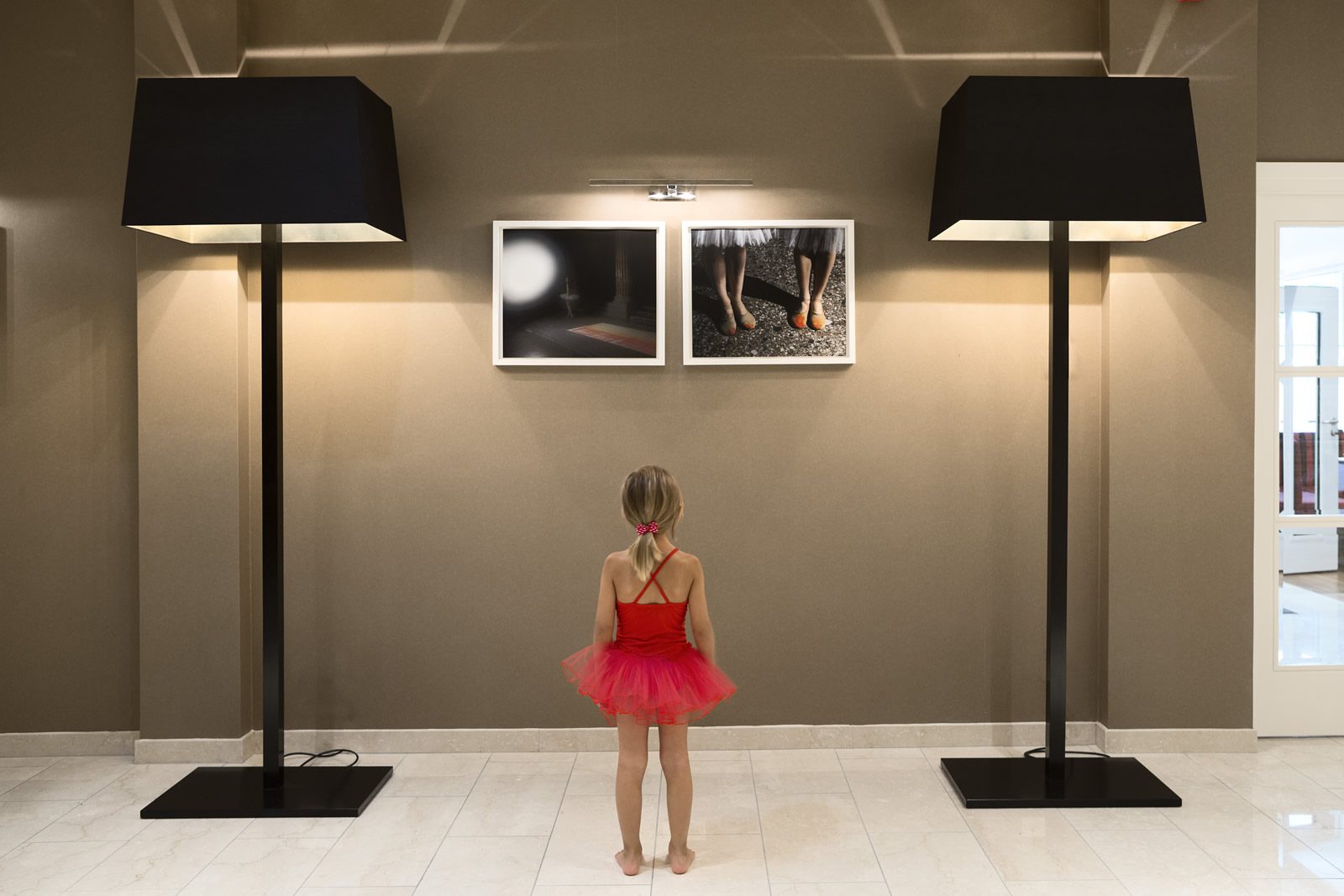
The Hotel Harmonie in Vienna: ‘a centre of wealth, craft, science, culture, literature and commerce’
The Harmonie, Vienna review
Vienna is a city of stories. Every square, every street, every building speaks to you of the artistic, cultural and imperial history of this capital without an empire. It was only just over 100 years ago after all that this city ruled Europe’s greatest empire, the Austro-Hungarian domaine that stretched from Germany to Italy and the Balkans.
Read more: Il Salviatino, Savoy Florence and Portrait Florence review
Not the biggest in size, but a centre of wealth, craft, science, culture, literature and commerce that dominated what was one of the most powerful continents in the world for centuries.
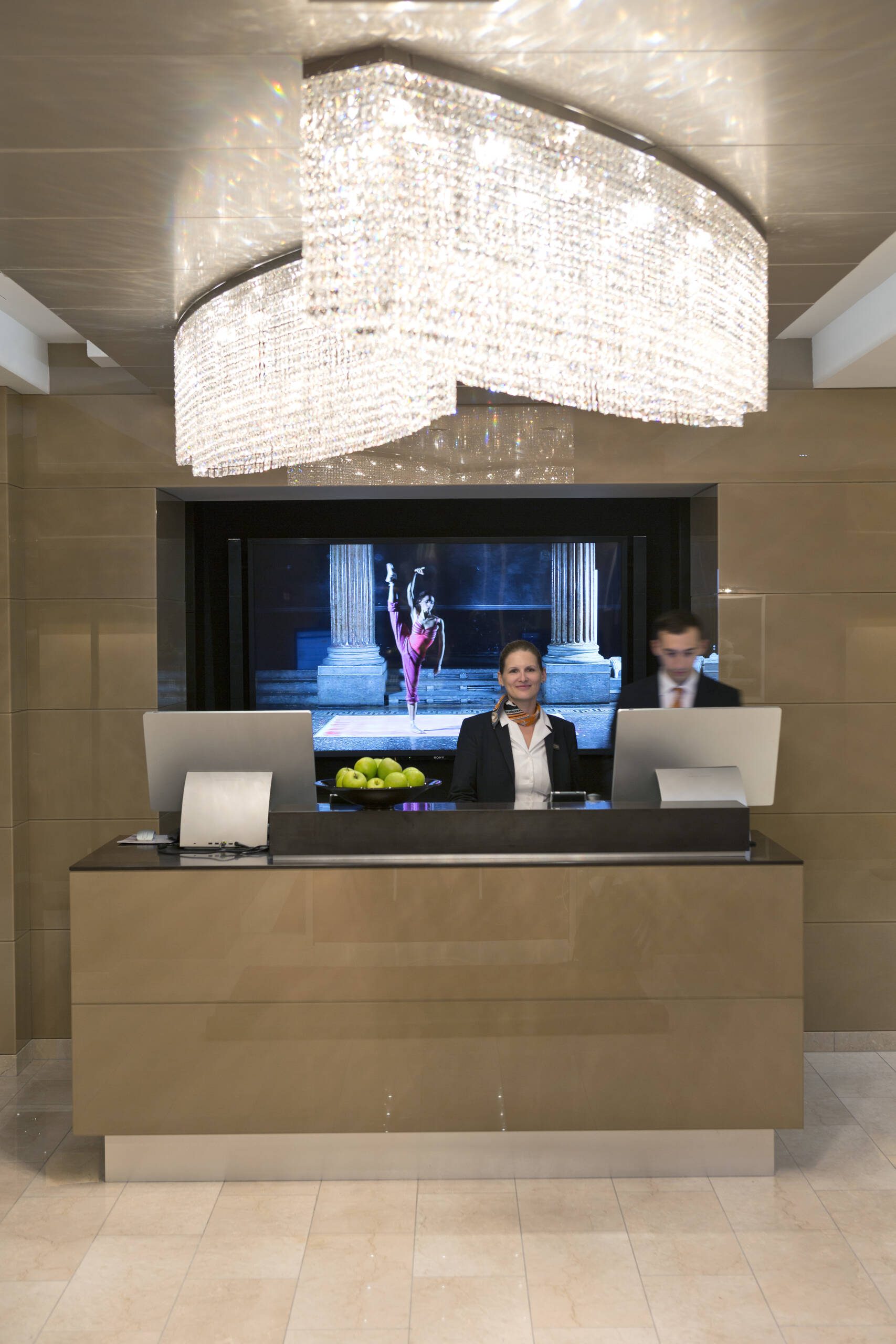
‘The Hotel Harmonie has a recognisable central European vibe as soon as you stroll in’
Vienna was virtually untouched by bombing in the Second World War and so is preserved perfect and unscathed, its stories seeping from its walls and the palaces almost alive.
In a city like this, we don’t always want to stay in a grand palace of a hotel, removed from the action. We want to feel part of the fabric of the story, joined with the history, living perhaps like the powerful Hapsburgs just over a century ago.
And it’s for this reason that we chose the Hotel Harmonie. It sits on a quiet street on the edge of Vienna’s historic central First District. You can walk to the great museums, the cathedral and squares through within minutes.
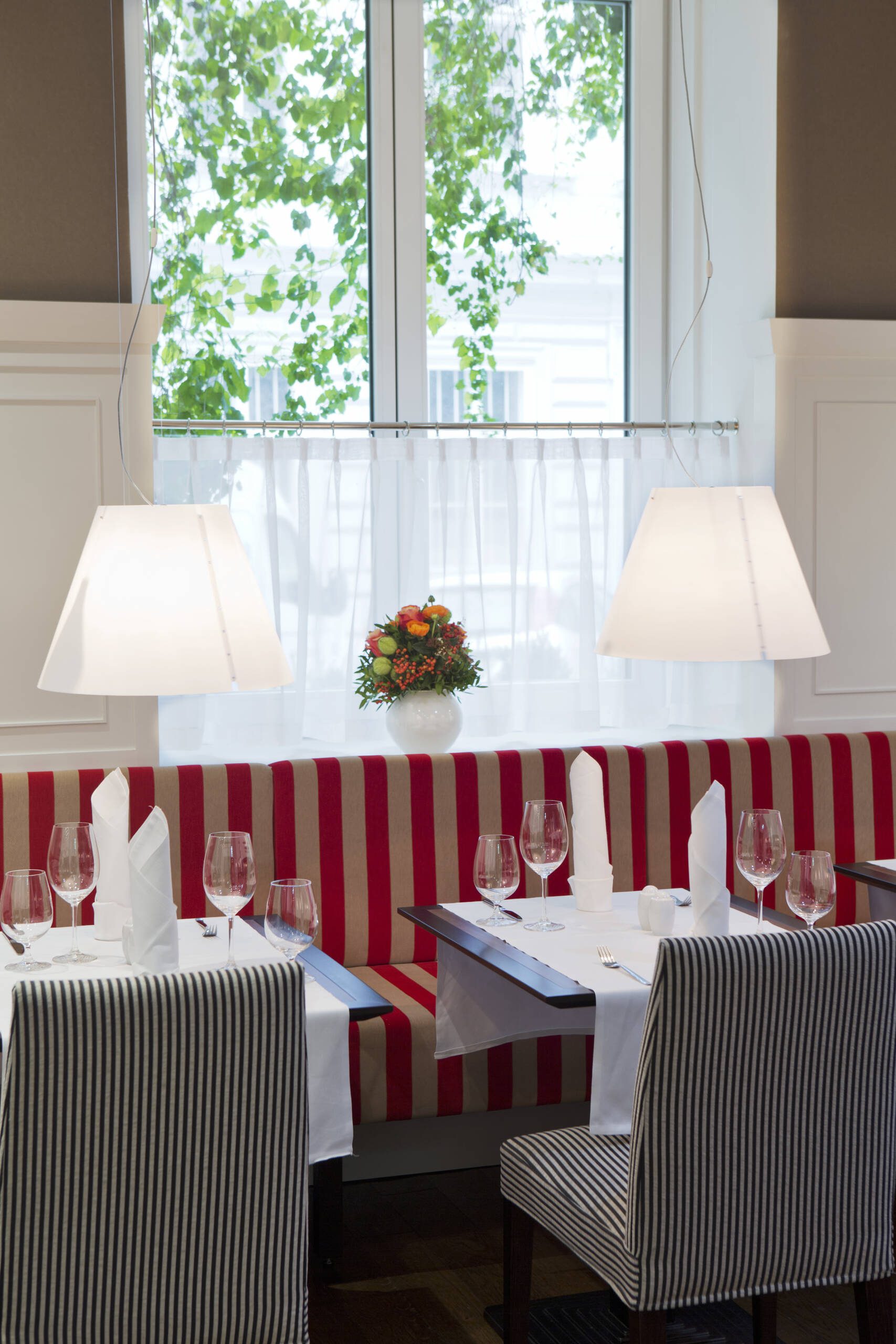
The Hotel Harmonie bistro: ‘everything beautifully laid out, homely, correct, with a sense of place’
A series of townhouses, or at least feeling like one, the Hotel Harmonie has a recognisable central European vibe as soon as you stroll in. It is immaculate, there is marble, and everything works beautifully but you also expect to see poets and spies in the corners of the bijou lobby area.
Read more: Binith Shah is creating the ultimate duvet with UMŌ Paris
Our room meanwhile was exactly what you might expect if you were staying with your distant cousin, the dowager princess of Hohenzollern zu Wolkenstein: everything beautifully laid out, homely, correct, with a sense of place.
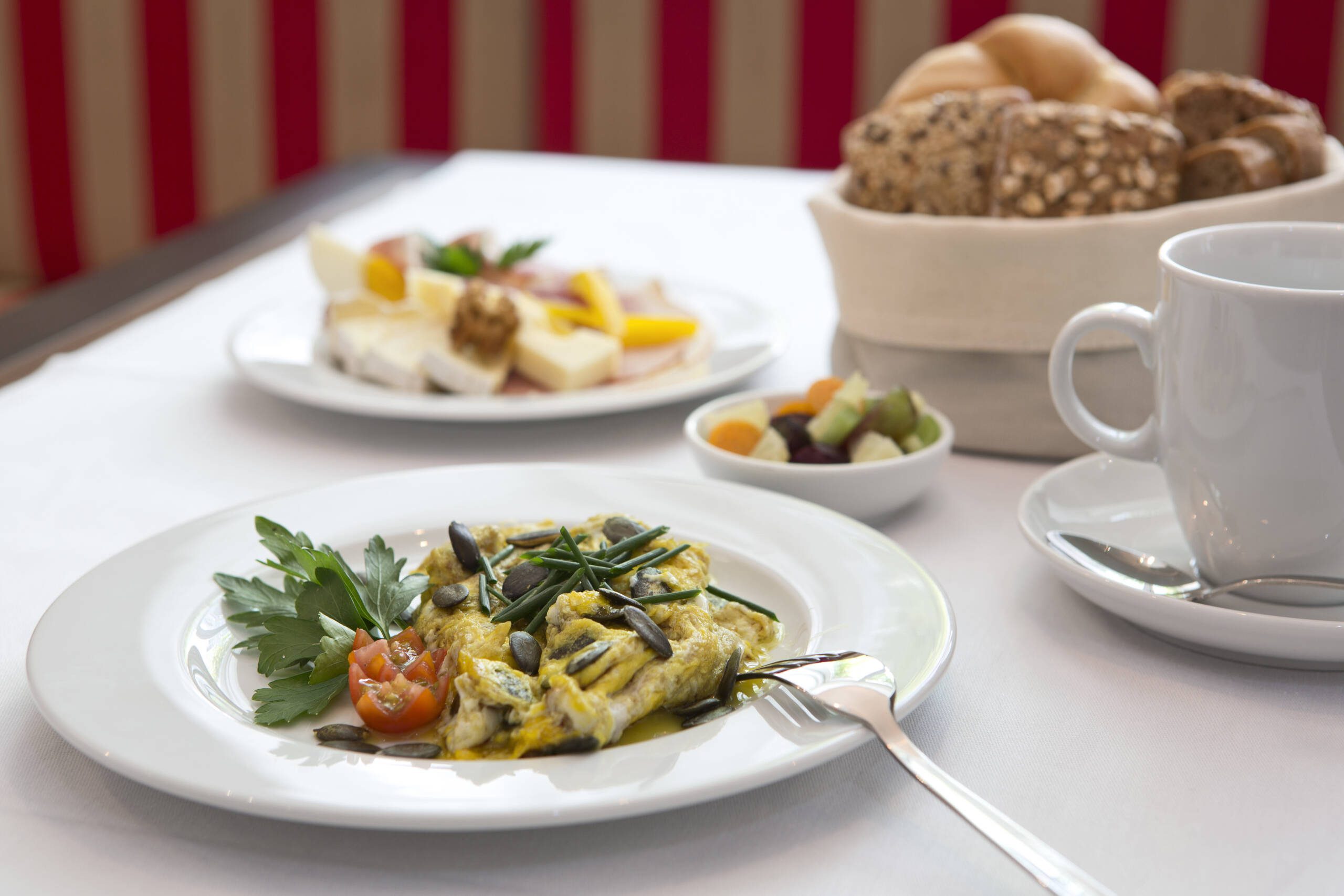
Breakfast at the Hotel Harmonie bistrot
The staff were polite, considered, and slightly reserved, just as you would expect and want the Viennese to be. A fulsome welcome is fine in Minneapolis: this is Mitteleuropa.
Meanwhile, our favourite part was the little bar just off the lobby, where newspapers – yes, real newspapers – on sticks were provided alongside coffee table books and a cultured atmosphere.
A place to come back to, for hundreds of years.
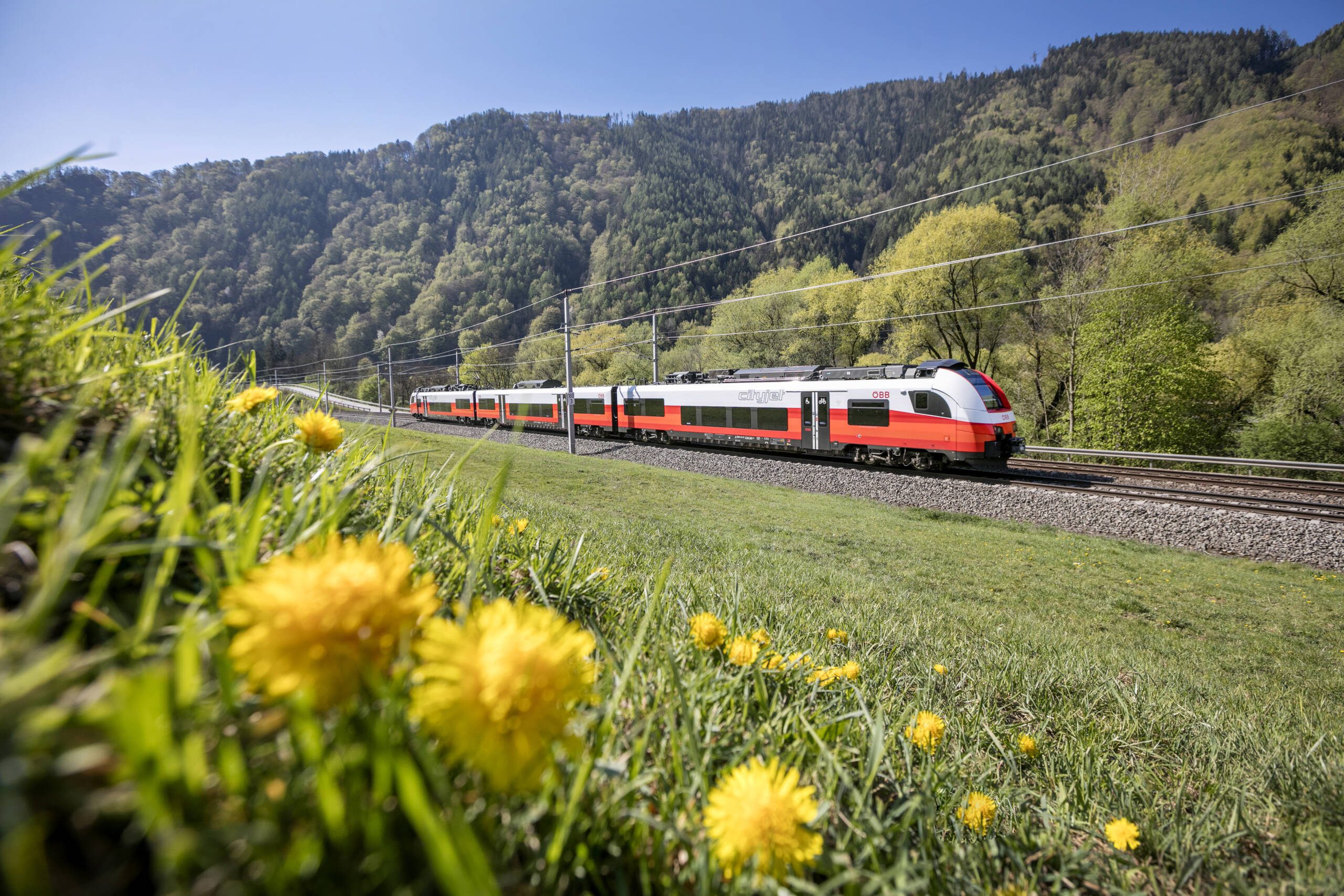
LUX travelled to and from Vienna by the most environmentally-friendly means possible, train. Our journey the length of Austria took us past the Wienerwald forest with its castles, along the deep Danube valley, the orchards near Linz, and the rising Alps as we approached the Tyrol, where the tracks were surrounded by dramatic snowy peaks, rising up to more than 1200m altitude, before dropping into the forests near Bregenz. All courtesy of the Austrian tourism board on Austria.info



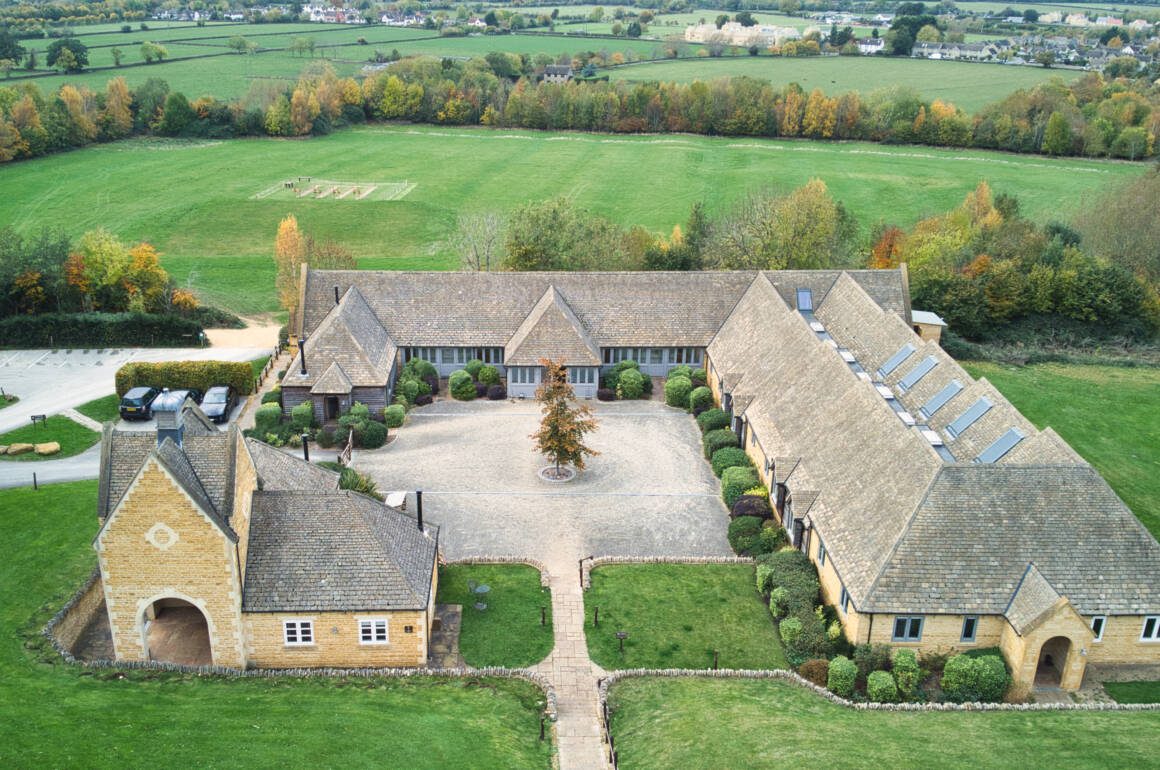

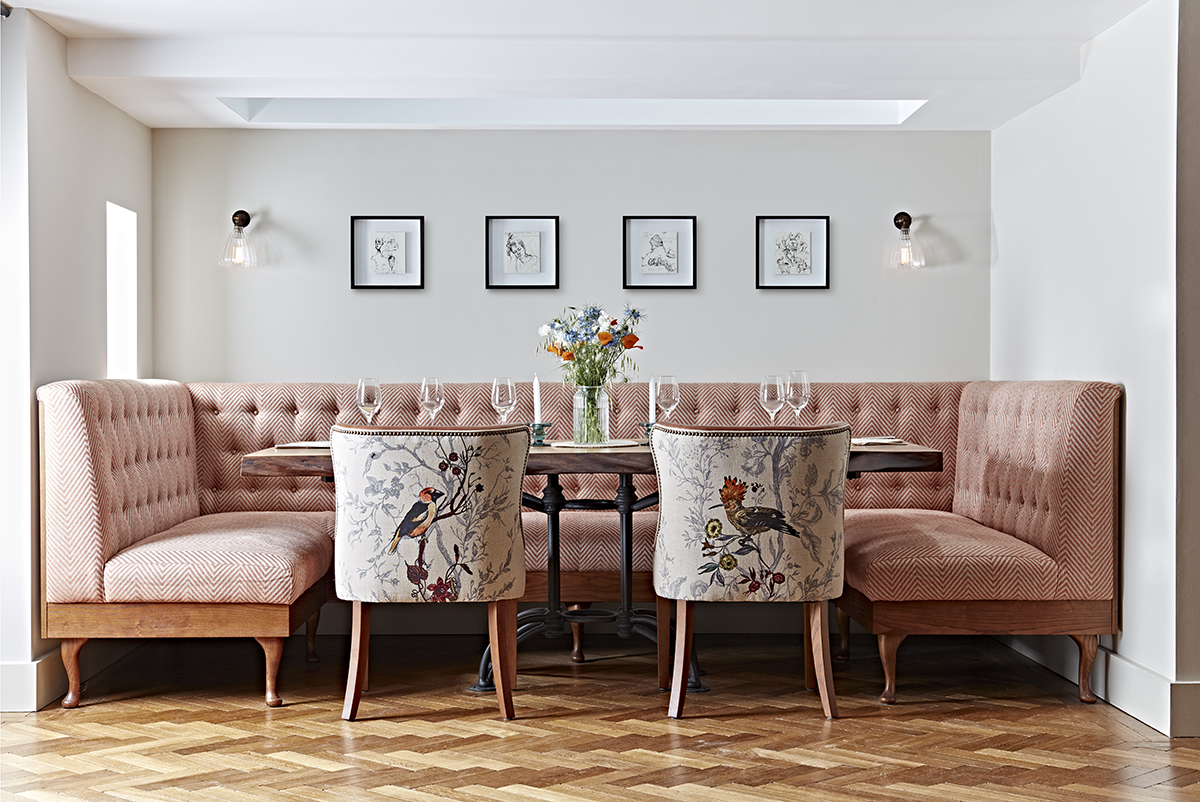


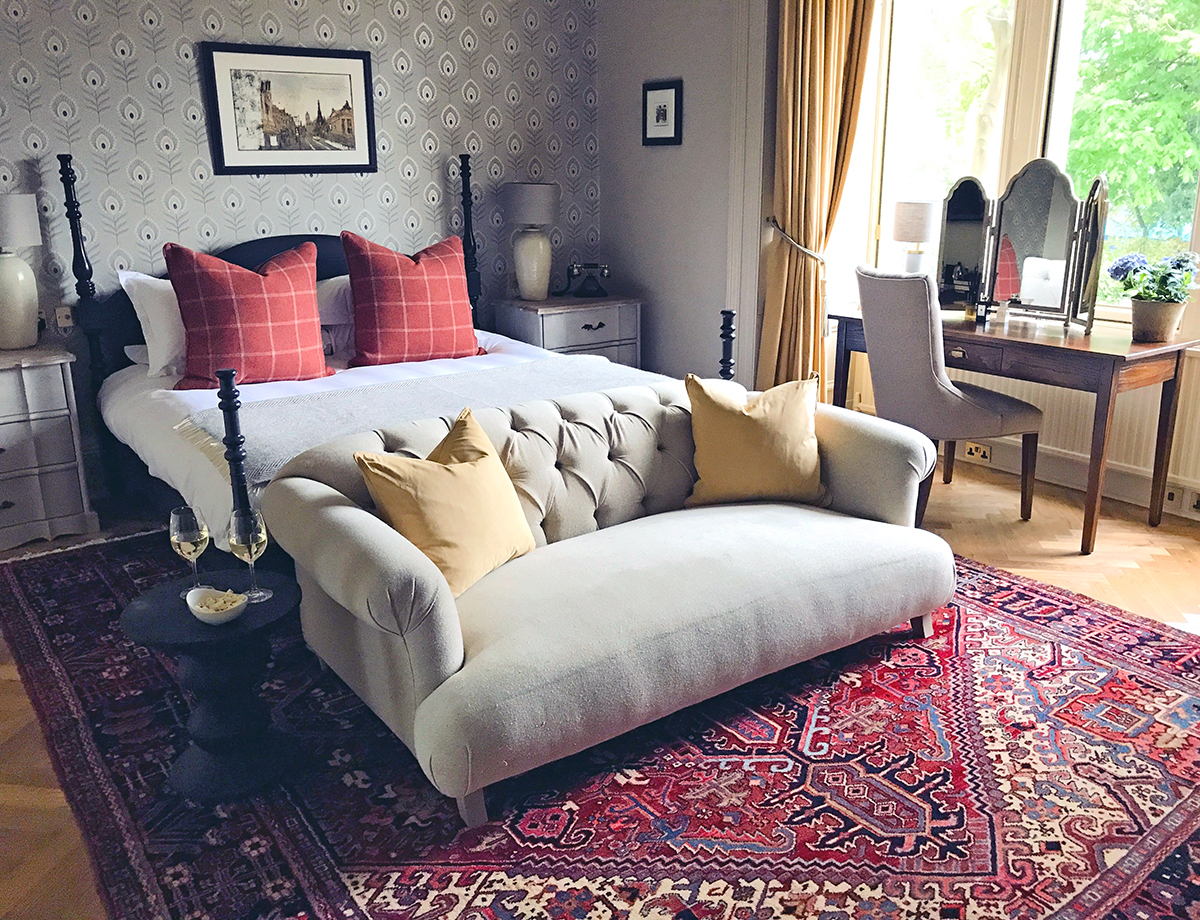
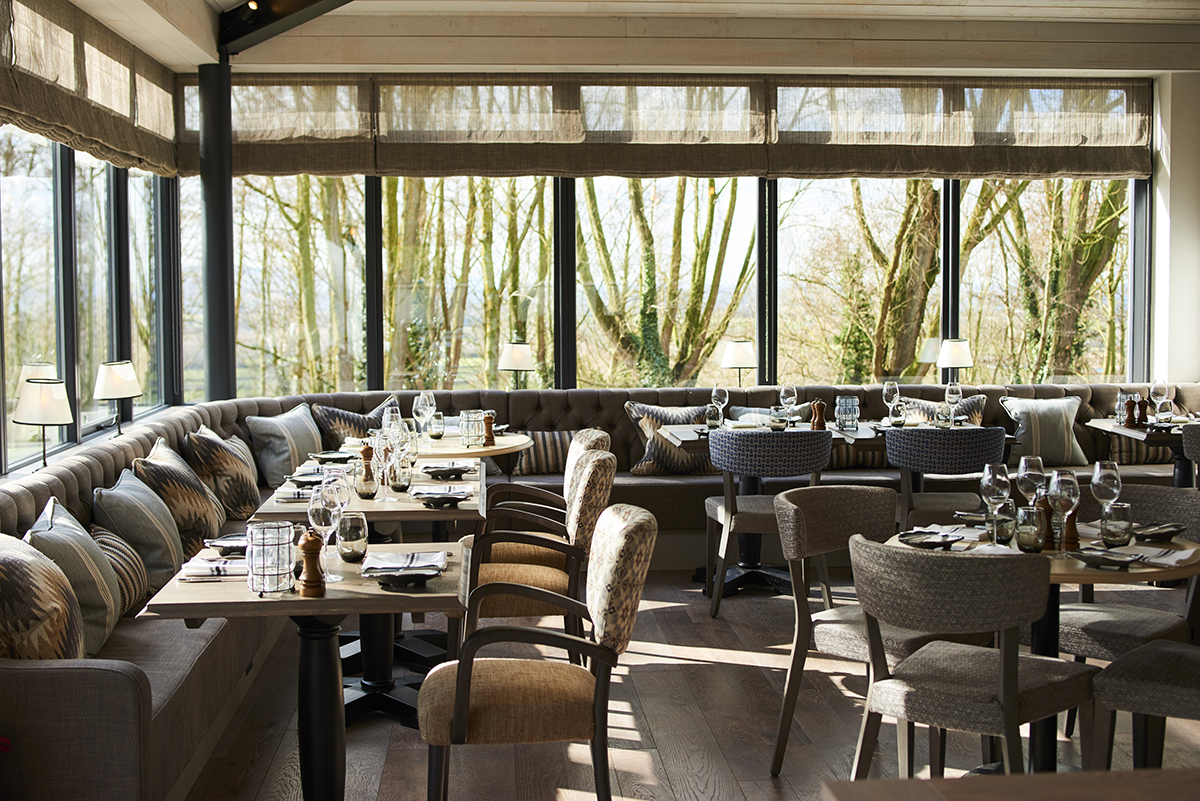
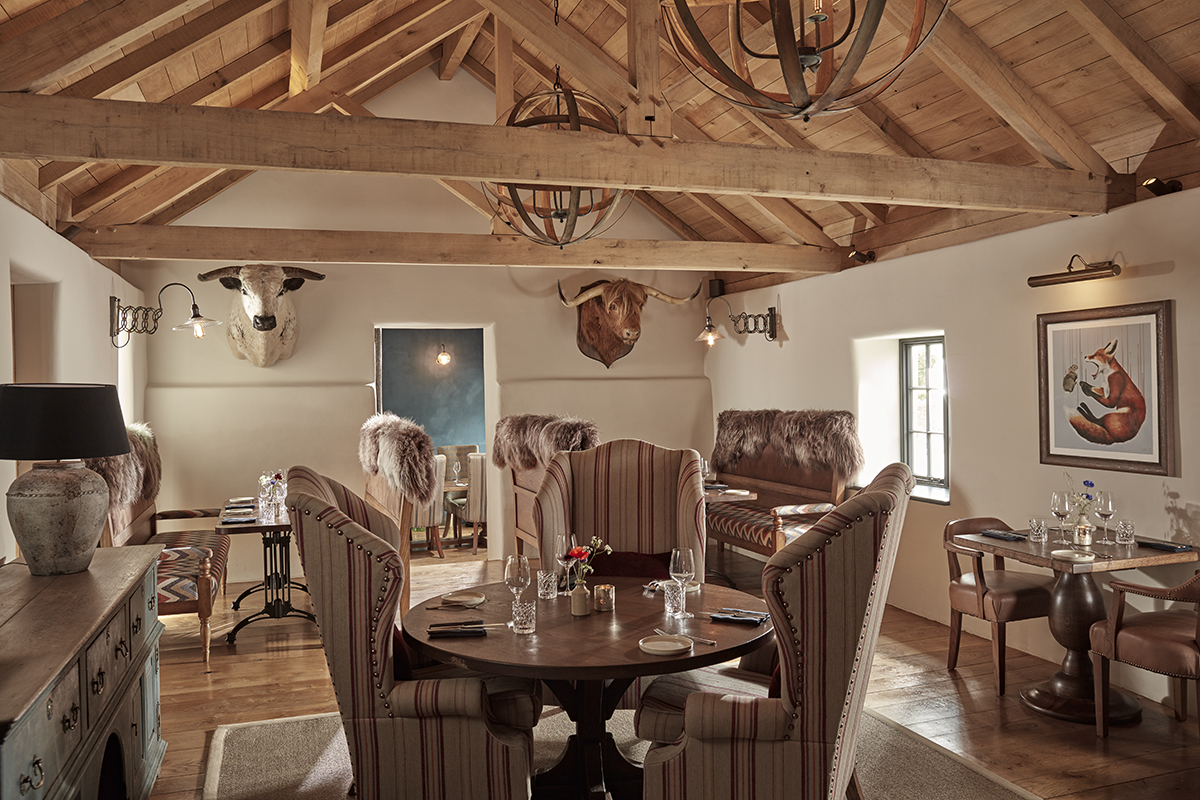
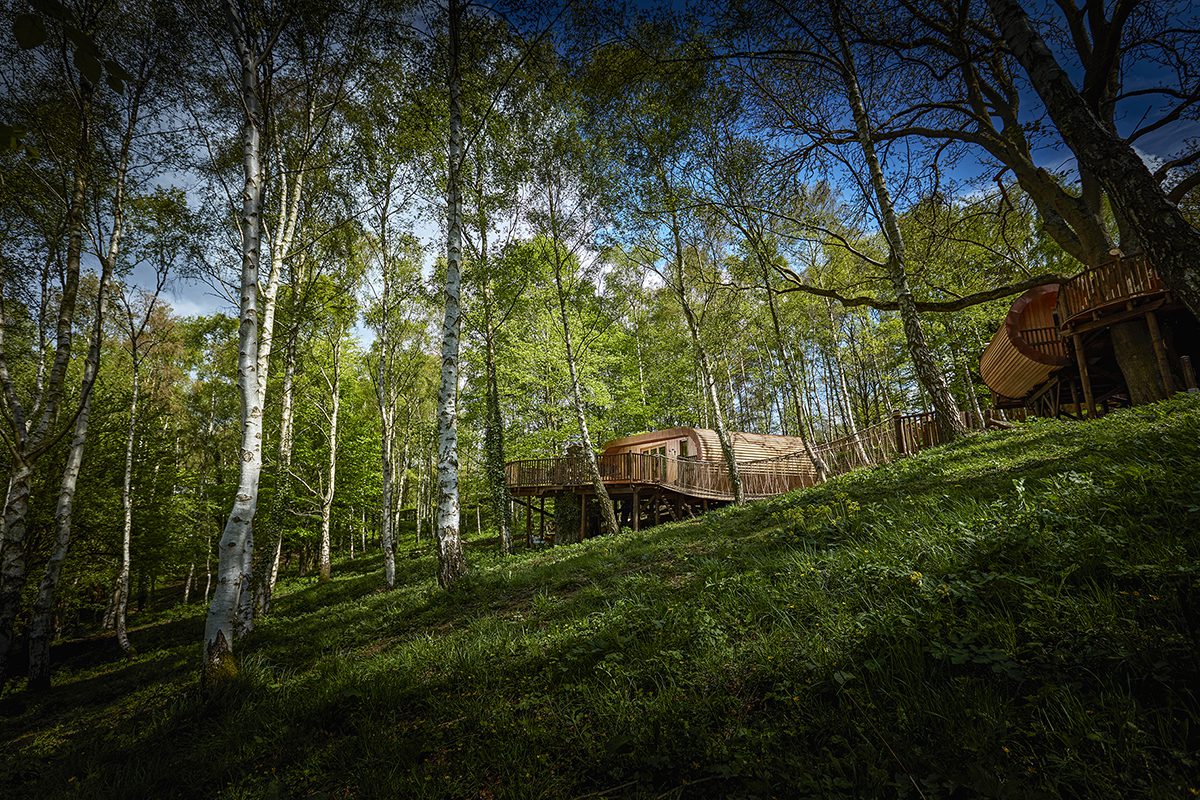
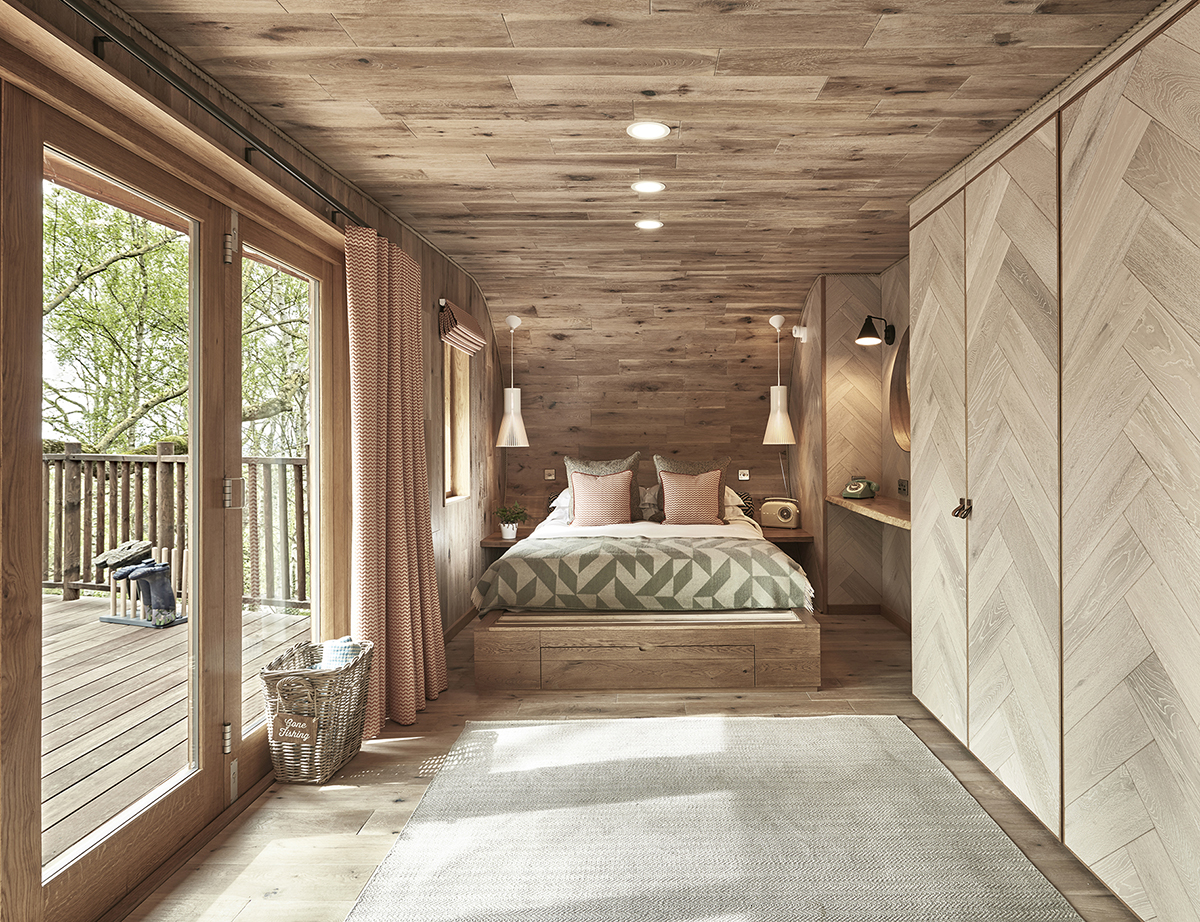
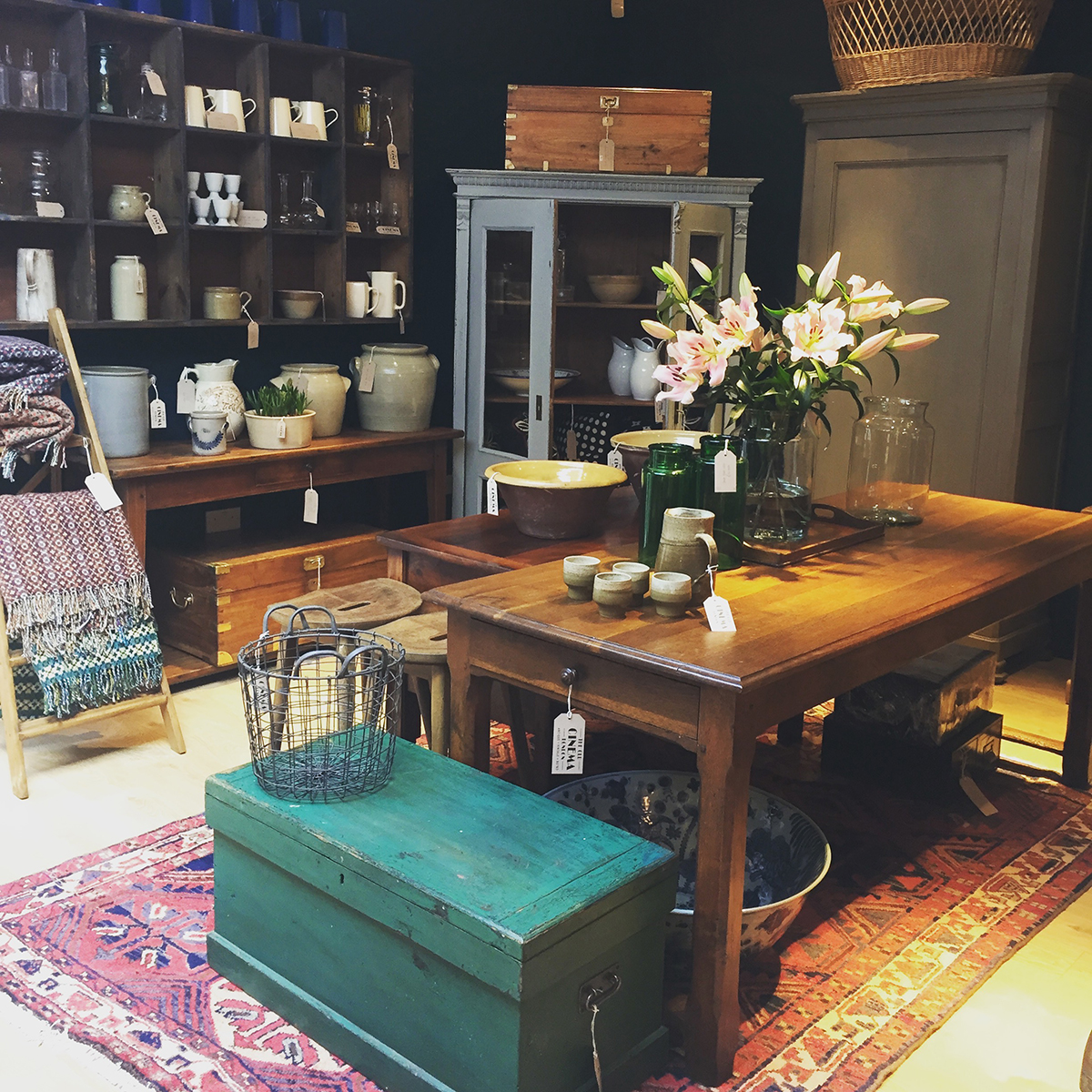



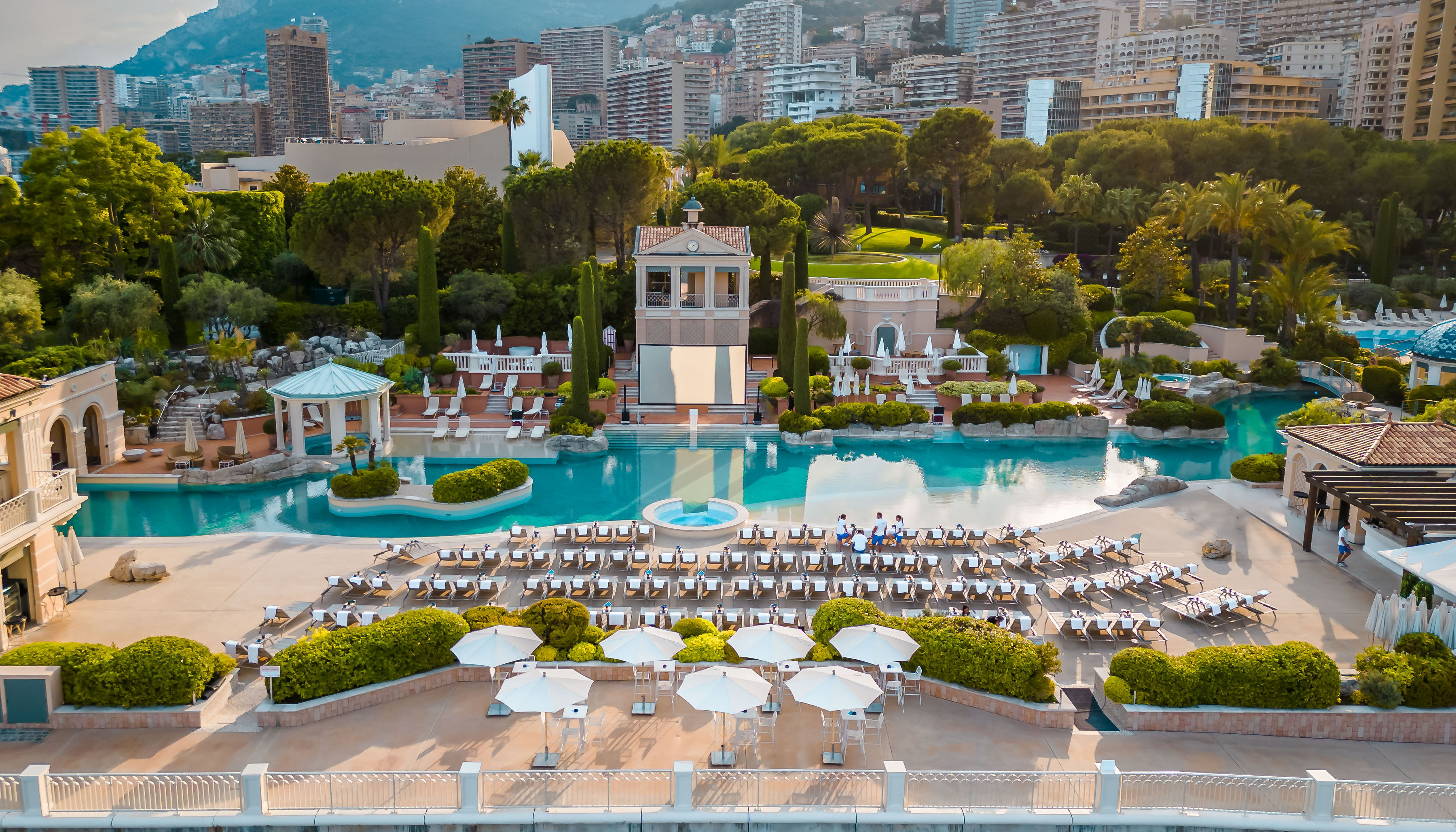

Recent Comments